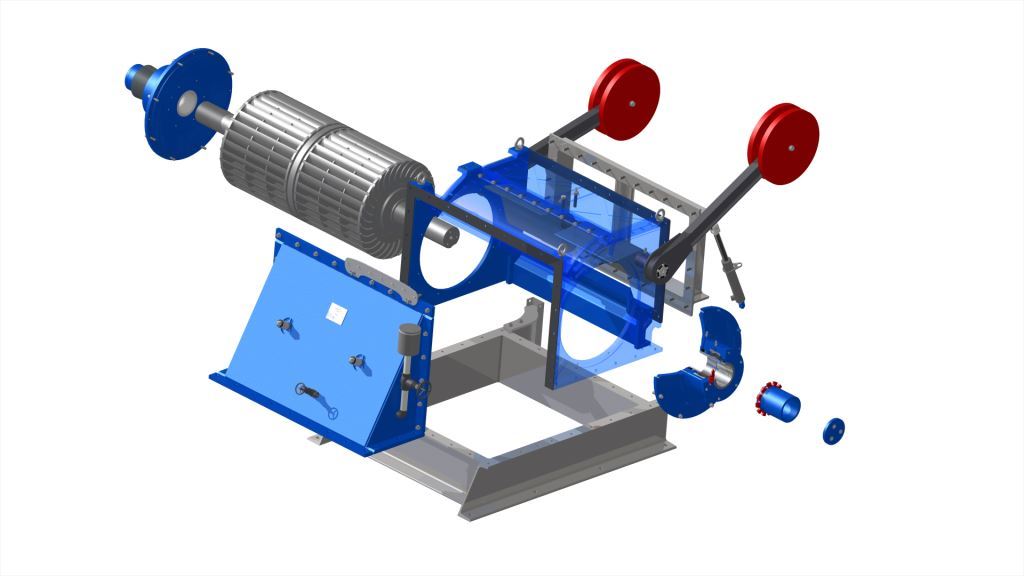
Australian engineer A.G.M. Mitchell invents the cross-flow turbine principle.
Hungarian-born Professor Donat Banki publishes various papers on the subject.
German company Ossberger is awarded patents for its technical improvements and markets these turbines on a huge scale.
Mockmore and Merryfield, from Oregon State University, publish a comprehensive work on cross-flow turbine theory and results obtained from their prototype.
U. Meier, for the SKAT, begins to draft construction plans for a cross-flow turbine designed for technology transfer to countries in the southern hemisphere (Series T1 – T12).
In addition to its low runaway speed, one of the major advantages of this turbine is the relative simplicity of its design, as it only includes two or three moving parts:
- the runner (without axial thrust);
- 1 or 2 valves for the flow control.
What makes it special is that the water crosses the runner twice, while the peripheral blades are driven successively by a centripetal radial and radial centrifugal flow.
The runner is completely insensitive to foliage, twigs, algae, plastic packaging, etc., which are ejected after a half-rotation due to the combined effect of the water flow and centrifugal force.
In terms of maximum efficiency, the Francis turbine is superior to the cross-flow for a flow rate equivalent to 80% of the nominal flow rate. But the cross-flow produces a better efficiency when used for a small fraction of the nominal flow rate (up to +/- 1/6 of the nominal flow rate for a subdivision of 1/3 – 2/3).
Maximum efficiency is not always the best factor when selecting a turbine, as it all depends on the frequency of occurrence of turbinated flows.
